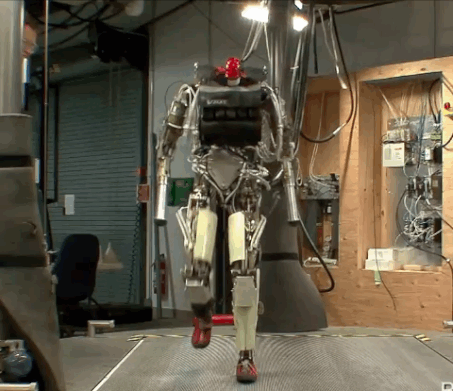I seldom refer to articles from CNN, Jeff Zucker’s golden shower of sorta news, but I will in the case of a new piece, “The Future of War Will Be Robotic,” published on the cable channel’s site by Peter W. Singer, whose work I greatly admire. Singer–not the famed ethicist but the author of Wired for War—points out one of the most important and overlooked stories of the calamity of the Iraq War: the technologizing of the American military machine, which has ramifications overseas and on the homefront. And the U.S. isn’t alone in this arms race in which the limbs are bionic. Singer’s opening:
The rise of the robot on the modern battlefield has happened so fast, it is almost breathtaking — that is, if you are not a robot yourself.
When the U.S. military invaded Iraq just over a decade ago, it only had a handful of unmanned systems, aka drones, in the air, and zero deployed into the ground forces. Today, its inventory in the air numbers well over 7,000, ranging from the now famous Predator and Reaper to the Navy’s new MQ-8 Fire Scout, a helicopter drone that just completed a series of autonomous takeoffs and landing tests from the back of a guided-missile destroyer.
On the ground, the inventory numbers some 12,000, ranging from iRobot’s PackBots, used to search for roadside bombs in Afghanistan, to the U.S. Marine Corps Warfighting Lab’s tests with Qinetiq’s Modular Advanced Armed Robotic System, a tracked robot that mounts cameras and a machine gun.
This revolution is by no means just an American one. At least 87 other countries have used military robotics of some sort, ranging from the UK to China, which has an especially fast-growing drone fleet, as shown off at its recent arms trade show.
A number of nonstate actors have added robots to their wares as well, including most recently both sides of the Syrian civil war, as well as ISIS. Both sides in the Ukraine conflict are also using them.
These robots, though, are just the start. If this was 100 years ago, they would be the equivalent of the Bristol TB 8, the first bomber plane, or the Mark I, the first tank used in battle. A host of changes awaits us. Their size, shape and form will move in wild and, for many, quite scary new directions.•
Tags: Peter W. Singer

